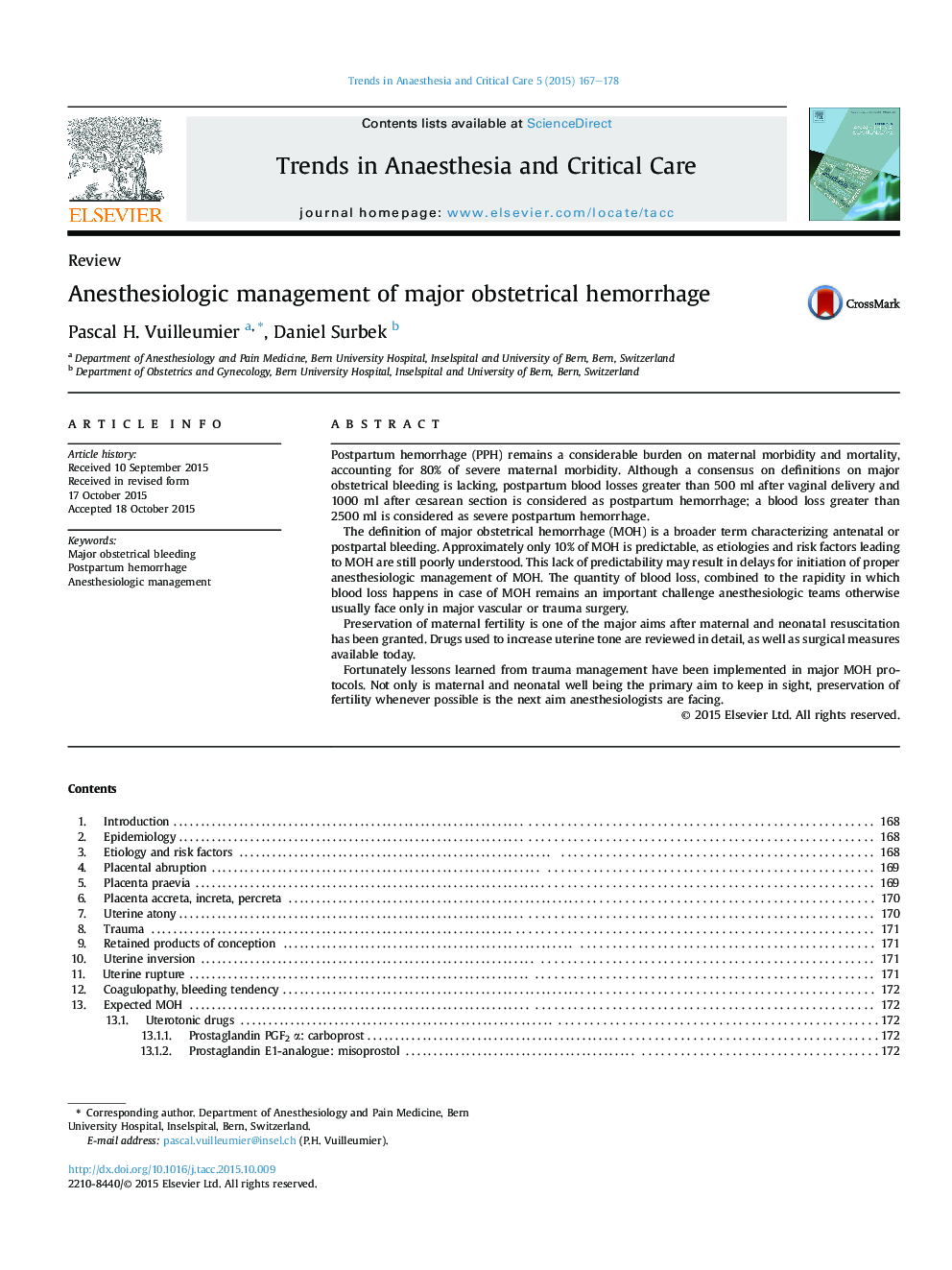| Article ID | Journal | Published Year | Pages | File Type |
|---|---|---|---|---|
| 2772578 | Trends in Anaesthesia and Critical Care | 2015 | 12 Pages |
•Major obstetrical bleeding is accounting for 80% of severe maternal morbidity.•Preservation of maternal fertility has become one of the major aims after maternal and neonatal resuscitation.•Insights gained in trauma anesthesiology have been implemented in major obstetrical bleeding protocols in the last years.
Postpartum hemorrhage (PPH) remains a considerable burden on maternal morbidity and mortality, accounting for 80% of severe maternal morbidity. Although a consensus on definitions on major obstetrical bleeding is lacking, postpartum blood losses greater than 500 ml after vaginal delivery and 1000 ml after cesarean section is considered as postpartum hemorrhage; a blood loss greater than 2500 ml is considered as severe postpartum hemorrhage.The definition of major obstetrical hemorrhage (MOH) is a broader term characterizing antenatal or postpartal bleeding. Approximately only 10% of MOH is predictable, as etiologies and risk factors leading to MOH are still poorly understood. This lack of predictability may result in delays for initiation of proper anesthesiologic management of MOH. The quantity of blood loss, combined to the rapidity in which blood loss happens in case of MOH remains an important challenge anesthesiologic teams otherwise usually face only in major vascular or trauma surgery.Preservation of maternal fertility is one of the major aims after maternal and neonatal resuscitation has been granted. Drugs used to increase uterine tone are reviewed in detail, as well as surgical measures available today.Fortunately lessons learned from trauma management have been implemented in major MOH protocols. Not only is maternal and neonatal well being the primary aim to keep in sight, preservation of fertility whenever possible is the next aim anesthesiologists are facing.
